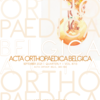Secondary radial neuropathy after closed intramedullary nailing of humeral shaft fractures. Results over a 10-year period
Locked intramedullary nailing ; radial nerve palsy ; humeral shaft fracture ; nerve exploration
Published online: Nov 22 2021
Abstract
Background. Retrospective study to examine secondary radial nerve palsy after humeral shaft fixation with closed locked intramedullary nailing. Materials and methods. Patients were identified from the hospitals’ registration systems for humeral shaft fractures, nerve lesions, plating, nailing and external fixation during a 10-year period from January 2007 to December 2016. All radial nerve lesions were registered and followed-up in patient files. Results. 89 patients with locked intramedullary nailing were available for an outpatient follow-up. Mean age was 67 years at the time of injury. 72 fractures were non-pathological. Of these, 31 were nonunions. 28, 61 and zero were identified in the proximal, middle and distal thirds of the humeral shaft respectively. 76 procedures were closed and 13 were with open reduction. Six radial nerves had nerve exploration. Eight patients developed immediate postoperative radial nerve palsies. Of these, six developed after closed surgery, two after nerve exploration. Of seven available patients with a radial nerve palsy, six of these remitted. Two patients were later surgically explored. One patient out of 89 sustained a verifiable permanent radial nerve paralysis. Conclusions. In this study, the risk of a radial nerve palsy was 7.9 % with closed locked intramedullary nailing. This study suggests that exploration of the radial nerve is not necessary routinely in order to prevent radial nerve lesions when performing closed intramedullary nailing for humeral shaft fractures in adults with a preoperative normal radial nerve function.
Level of Evidence : Level IV.
